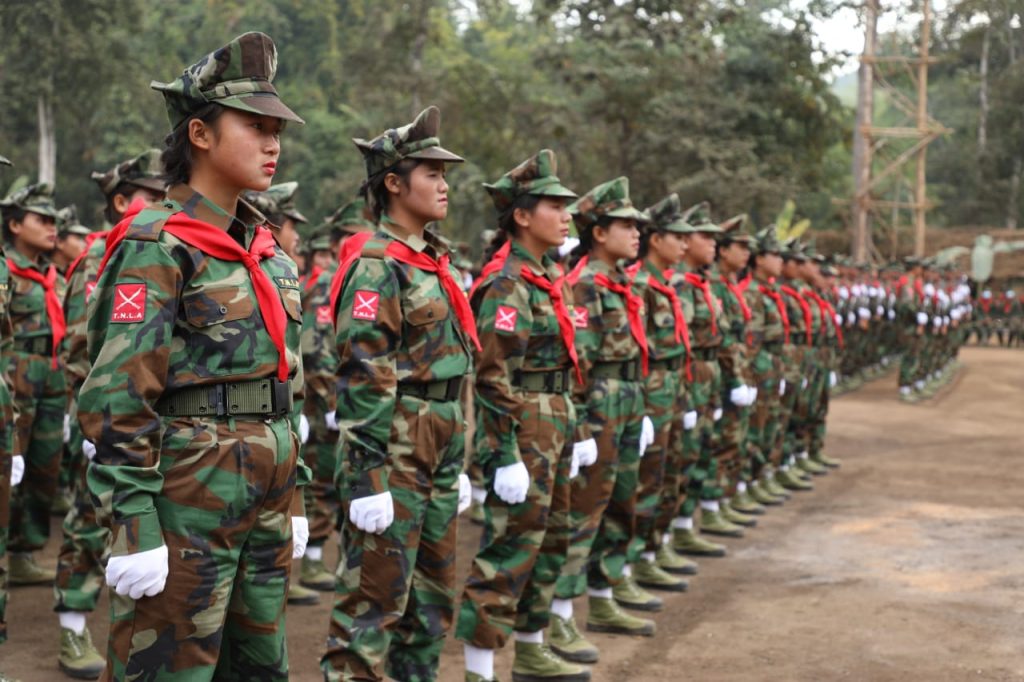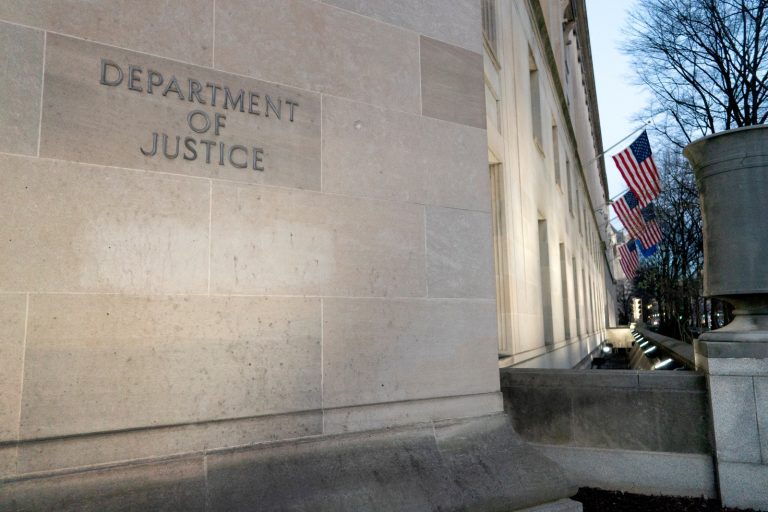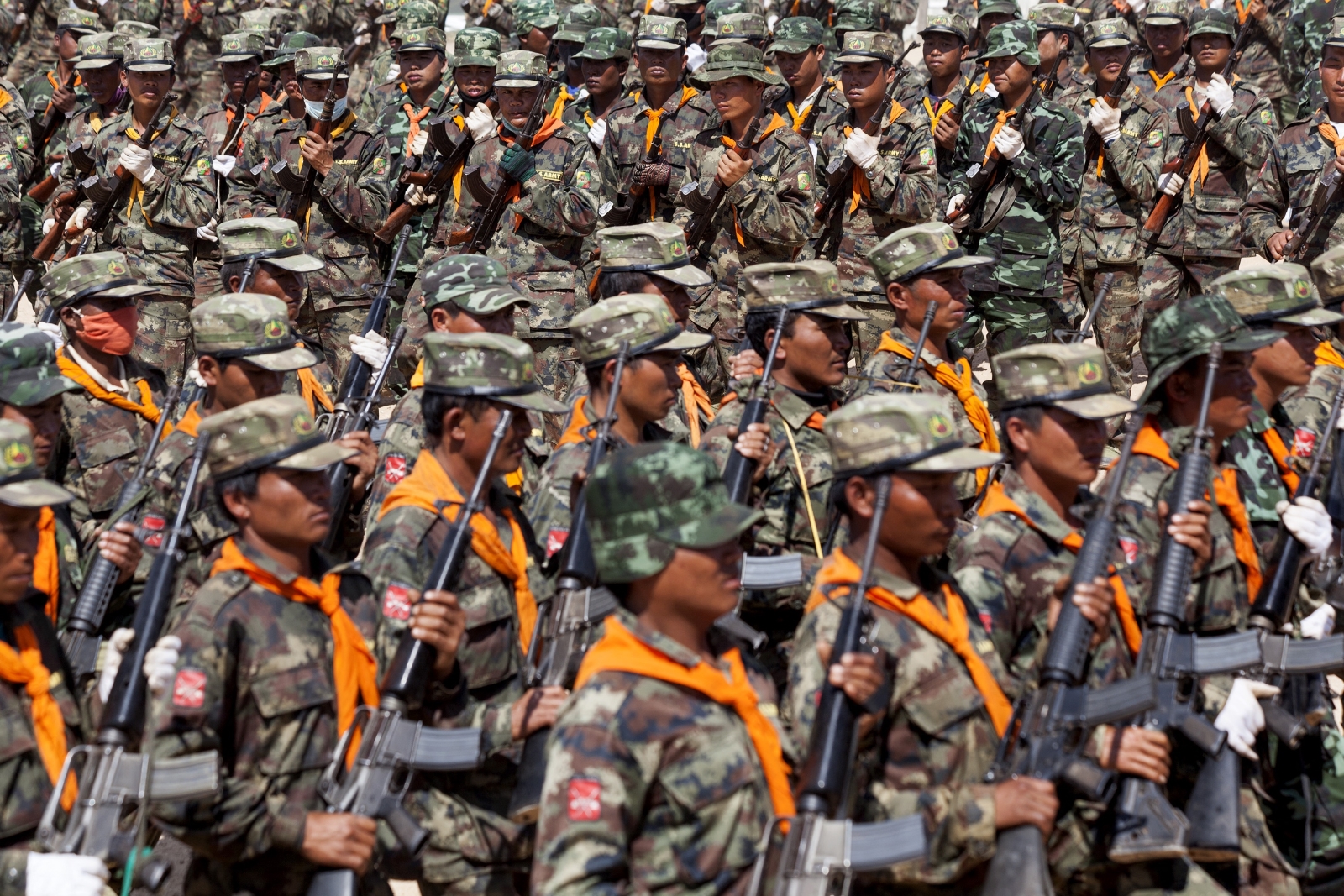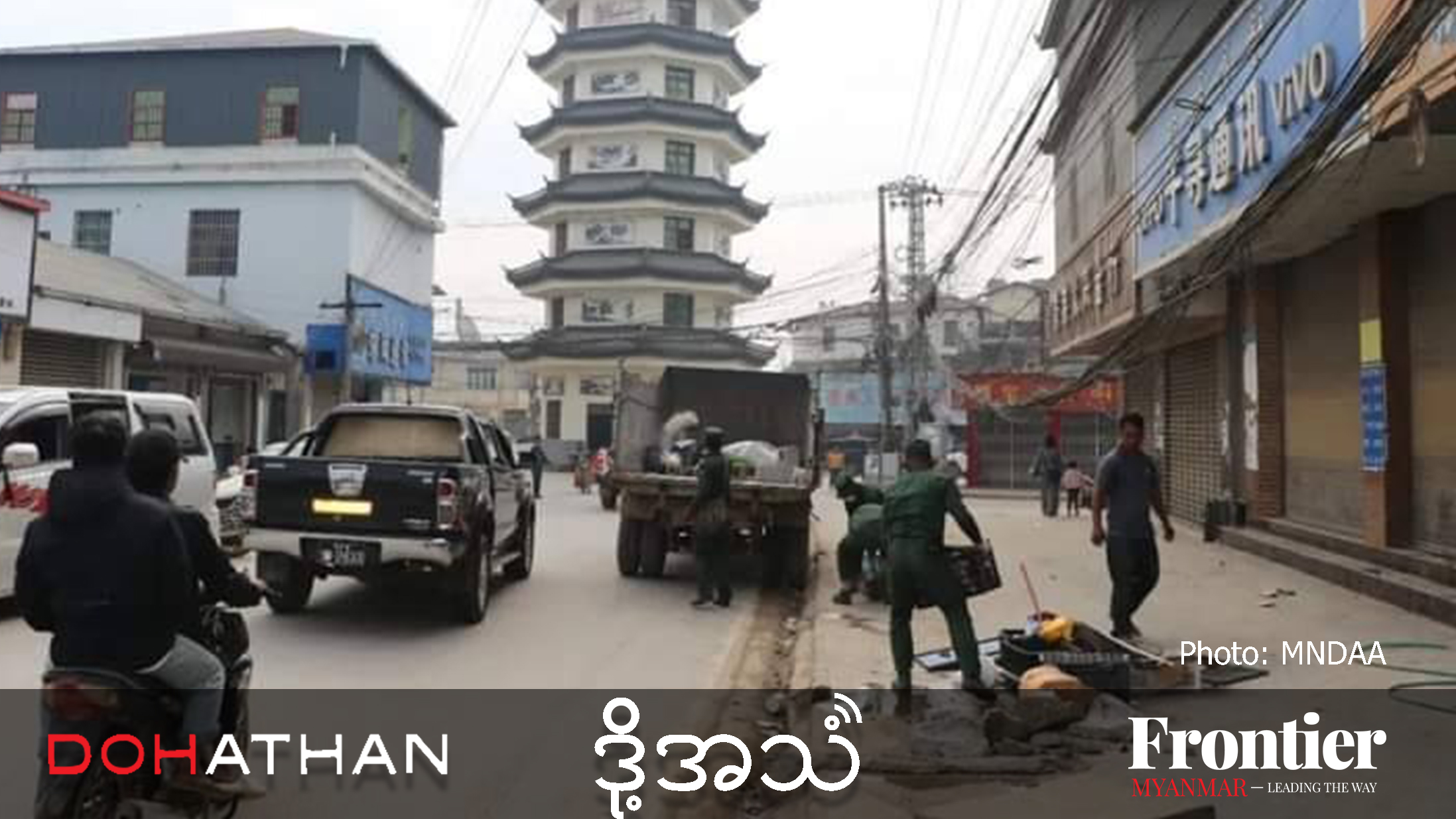A fight for territory between Shan and Ta’ang armed groups in northern Shan State has displaced thousands, in a conflict in which the Tatmadaw has been accused of taking sides.
By LAWI WENG | FRONTIER
During two weeks of fighting over the new year between the Restoration Council of Shan State and Ta’ang National Liberation Army, more than 2,000 people in northern Shan State’s Kyaukme and Namtu townships were driven from their homes. Most were Ta’ang, also called Palaung in Burmese, local sources say.
“It’s no good to see Shan and Ta’ang fighting each other when we all live in the same state,” said Ta’ang civil society leader Lway Than Nu, who is general secretary of Owmtamao Organisation, an aid group that has assisted people displaced by the fighting. “I would like [both sides] to hold peace talks so the fighting ends and they can return home,” she told Frontier.
Fighting erupted on Christmas Day in Lwel En Tin village in Kyaukme and Mann San village in Namtu, before spreading to nearby villages. It came amid accusations from the TNLA that the RCSS, one of the eight initial signatories to the Nationwide Ceasefire Agreement in 2015, has been misusing the accord by collaborating with the Tatmadaw to encroach on the territory of other ethnic armed groups.
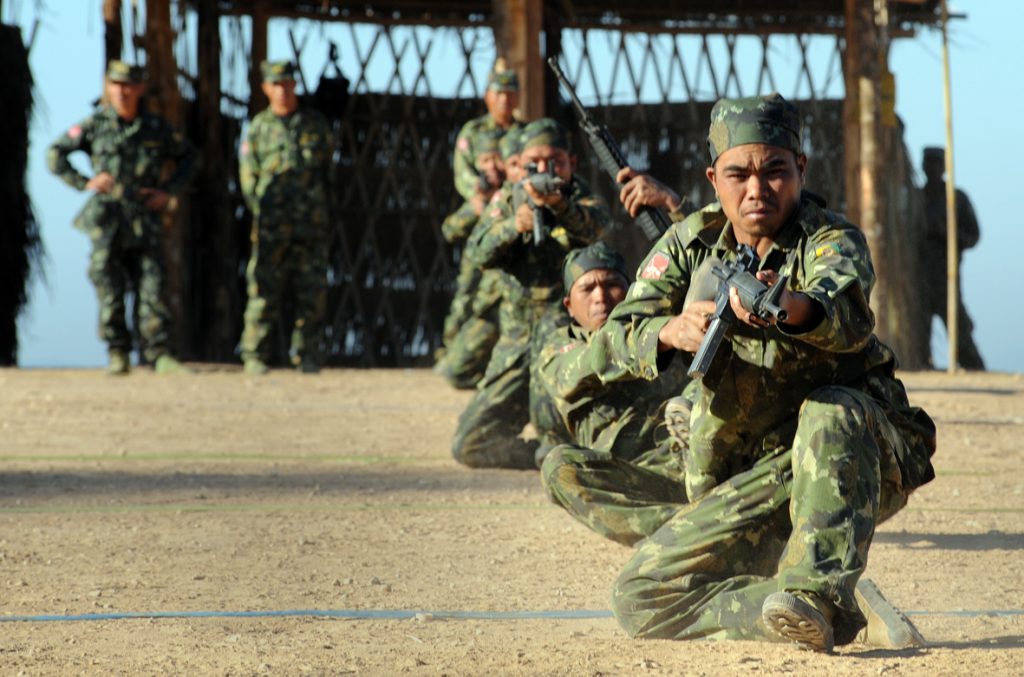
Soldiers from the Shan State Army-South, the armed wing of the Restoration Council of Shan State. (Supplied)
Than Nu said only a few IDPs reached Kyaukme town the day the fighting began, but that hundreds had arrived by December 28. They included many elderly people and children who showed up tired and sick after their long trek to safety. She said some of the elders cried every day, longing for homes they feared had been destroyed. “It made me uncomfortable to see the elders crying,” she said. “They were weak and malnourished.”
In the beginning, locals donated food to the monasteries and government schools where the IDPs were staying, but the donations quickly thinned. “We have enough rice for a week, but not enough vegetables for curry. Even now, we cannot provide enough curry,” Than Nu said on January 9. Township officials solicited donations locally but COVID-19 travel restrictions made it hard for residents of neighbouring villages to bring supplies, and meant that no government ministries or United Nations agencies came to help.
For many years, the Shan and Ta’ang lived more or less in harmony. That ended in 2015, after the RCSS signed the NCA and began moving from southern Shan into the north. This move sparked almost immediate clashes with the TNLA, which had formed only six years earlier but was rapidly building up its strength.
Marching north
The RCSS had been based in the state’s south for decades, and some believe the RCSS used the NCA – which permitted foreign governments like Norway and Japan to fund RCSS development projects – as a tool to legally expand north, igniting the conflict.
Shan sources say the RCSS had planned to move its bases north since at least 2005 but for a decade had been thwarted by Tatmadaw resistance. One RCSS battalion that tried moving north in January that year was attacked by and surrendered to the Tatmadaw’s northeastern command, said U Khunsai Jaiyen, an advisor to the Peace Process Steering Team and the managing director of the Pyidaungsu Institute, which was established in 2013 by ethnic nationality and civil society groups to promote peace.
After the NCA was signed, the RCSS established bases in Namtu, Hsipaw and Kyaukme townships. The move sparked fighting between the RCSS and both the Shan State Progress Party, which controlled areas outside of major towns there, and the TNLA.
Just before the 2015 election, the Tatmadaw attacked the SSPP headquarters in the Wan Hai region of Kyethi Township. Some Ta’ang leaders believe the RCSS, while trying to establish bases in the north, sent a false message to the SSPP that they’d help fend off the Tatmadaw. But when the SSPP ordered all its troops back from the field to defend its headquarters, the RCSS seized their unmanned bases and has not returned them since. This has sparked suspicions that the RCSS was working with the Tatmadaw – allegations the group rejects. The two Shan groups have struggled for control of these contested areas since.
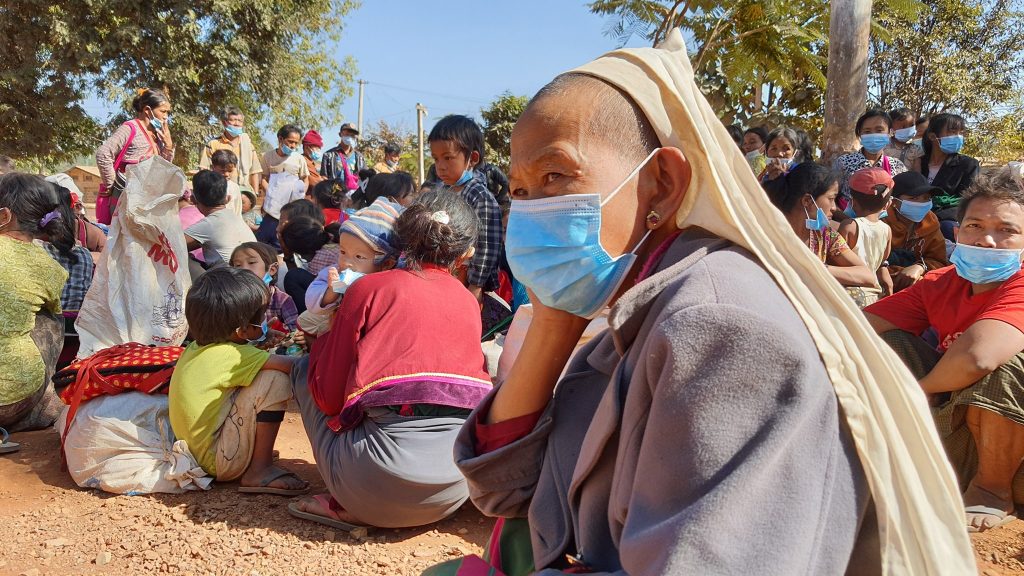
The RCSS’s conflict with the TNLA has followed a similar pattern. The RCSS and Tatmadaw both began striking TNLA positions in late 2015, often at the same time but from different fronts. This has led to suspicion from the TNLA and some observers that the two have been coordinating. Again, the RCSS denies working with the Tatmadaw.
Senior TNLA leader Brigadier-General Tar Bhone Kyaw told Frontier he believes the Tatmadaw has used the RCSS in battle to distract TNLA soldiers and seize the group’s territory. It has then handed that territory off to the RCSS, thereby expanding areas under their joint control.
“It was the Tatmadaw’s strategy to have the RCSS attack us,” Tar Bhone Kyaw claimed, referring to the recent attacks on TNLA positions in Kyaukme, Namtu and Hsipaw townships, between December 25 and January 7.
‘All our people must be free’
Territory captured by the RCSS from the TNLA includes Loi Ann, Khaungkha, Tauk San and Lwel En Tin villages, which are in ethnically diverse areas where the Ta’ang comprise the majority.
After the RCSS seized territory it established military bases in the villages, and the TNLA withdrew its forces, saying it wanted to avoid fighting that would cause casualties and destroy property.
Despite its withdrawal, the TNLA has vowed to return to keep the RCSS from ruling over its people.
“We are very worried about our people who have stayed in those villages,” said Tar Bhone Kyaw. “We want to tell our people to be strong for the time being … We will fight back,” he said. “We will not let the RCSS rule our people. We will continue to fight to send them back to southern Shan State.”
He said about 3,000 Ta’ang now live under the control of the RCSS.
Several Ta’ang monks told Frontier that the RCSS has been forcibly recruiting Ta’ang civilians under its control to fight on the frontlines against the TNLA.
“All our people must be free from oppression; this is one of the main goals of our armed revolution,” Tar Bhone Kyaw said.
The RCSS rejects the TNLA’s claim that they’ve used the NCA to gain territory in northern Shan, and says it has consistently claimed the right to establish bases in areas of the state where Shan people live.
RCSS spokesperson Lieutenant-Colonel Sai Ohm Khur said the RCSS has long been active in northern Shan.
“The main problem is that the TNLA does not want us to stay in northern Shan, but the RCSS is not from a foreign country; we are Shan and we have to stay among our Shan people,” he told Frontier on January 10. “It is not right that they say we should leave; it is not fair for them to say we are occupying their territory.”
Khunsai Jaiyen said he believes the conflict will only worsen in the near future, but that peace talks remained the best solution.
He said TNLA offensives against the RCSS would be counterproductive, because even if the TNLA could eliminate the RCSS from northern Shan, it could not survive on its own; if it came under attack from the Tatmadaw it would be destroyed.
‘Therefore, we fight’
TNLA’s ultimate goal is to create a Ta’ang state officially recognised by the Union government, or its own state within a more autonomous, federated Shan State in the future. The constitution accords the Ta’ang a self-administered zone comprising Mantong and Namhsan township, but the government of this zone has little authority and the TNLA also claims a far larger area.
The SSPP, a TNLA ally, supports their aspirations. The RCSS, meanwhile, refuses to consider a separate Ta’ang state within Shan.
“They do not want to recognise our political stance; they want us to stay at Mantong and Namhsan townships [in the Palaung Self-Administered Zone],” Tar Bhone Kyaw said. “Their stance is similar to that of the Myanmar government, which is very different to ours. Therefore, we fight.”
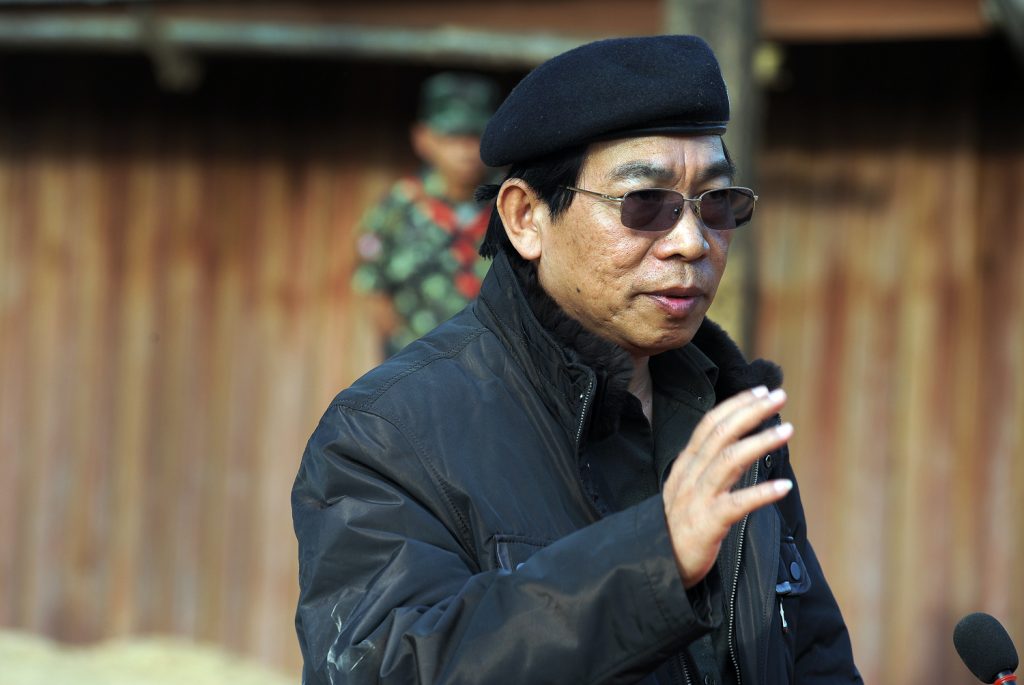
Restoration Council of Shan State leader General Yawd Serk. (Steve Tickner | Frontier)
The Shan Herald News Agency reported that RCSS chair General Yawd Serk – who also leads the group’s armed wing, the Shan State Army-South – said in a video presentation in early January posted on the group’s Tai Freedom Facebook page that the fighting will end if the TNLA stays in Mantong and Namhsan. He accused the group of launching attacks on the RCSS, and called for a political instead of a military solution.
“The Myanmar army attacked us for a long time, but could not get rid of us, and it will be impossible for the TNLA to eliminate us, too,” he said. “We should leave conflict behind and engage in political dialogue.”
But Tar Bhone Kyaw said that if the RCSS continues to recruit Ta’ang to use in the SSA-South, and if it continues cooperating with the Tatmadaw on military strategy, a political solution will remain elusive.
‘We could have been killed at any time’
On January 5, Lway Naw Jor, 27, a Ta’ang from Namtu, fled to Lashio with other community members in a convoy of five vehicles. They travelled together for safety but it was still a perilous journey.
“Our cars had to stop for long periods on the way because of the fighting. We could hear them shooting at each other and we feared getting shot,” she said. “We could have been killed at any time.”
Naw Jor said the fighting has further entrenched poverty in her township, and that she hopes the TNLA and the RCSS will hold peace talks soon.
“The armed groups in our township include the Tatmadaw, RCSS and TNLA. Residents of our area have often disappeared, but we do not know which group detained them,” she said. “More than 30 people have disappeared since the fighting between the TNLA and RCSS first began, in 2015.”
On December 27, Naw Jor posted a sorrowful message on Facebook announcing the death of her brother, a TNLA soldier, who had been killed in battle. “Our family will remember you forever. I’m sorry we could not say goodbye or happy new year,” she wrote. She said he had served in the TNLA to protect the Ta’ang and was killed in fighting against the RCSS, but did not specify in which township he was killed or on what date.
She said tea plantation owners, including her own family, have abandoned their plantations for lack of security and fear of being detained or taxed by the RCSS.
“Our family stopped working and left our tea garden out of fear in 2018, which has only made us poorer,” she said.
Before COVID-19, that same fear had led many young and unemployed people to China in search of jobs to support their families back home.
“COVID-19 has made the situation worse. They have no work because of the pandemic and are no longer sending money, which is causing problems for families that relied on these remittances. Many are unemployed and depressed, and are turning to drugs” she said.
Under the TNLA’s system of compulsory military service, each Ta’ang family is required to provide one man to serve in its ranks – despite objections from some.
Naw Jor now worries how the Ta’ang will find young, capable leaders when so many young men must serve – and die – in the TNLA, fighting to protect territory the Ta’ang regards as its homeland.
“To build a country, we need a young generation. But many of our young who serve in the military have been killed in battle. How will we have a new generation of leaders in the future?” she said.


